
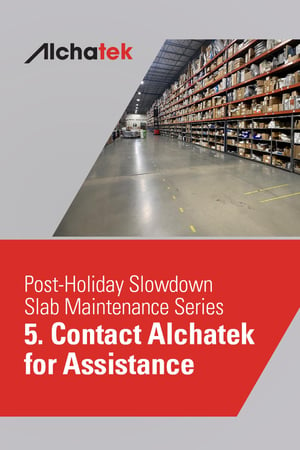 Alchatek, with its expertise in commercial property maintenance, stands ready to provide comprehensive support in addressing your concrete slab needs.
Alchatek, with its expertise in commercial property maintenance, stands ready to provide comprehensive support in addressing your concrete slab needs.
Technical Guidance from Alchatek
- Expert Consultations: Alchatek offers technical consultations to help you understand the specific needs of your property. These experienced technicians can guide you through the process of assessing slab conditions and determining the most effective repair solutions.
- Customized Solutions: Understanding that each property is unique, Alchatek provides tailored recommendations that align with your specific requirements and budget considerations.
Referrals to Expert Contractors
- Trusted Introductions: Alchatek can refer you to professional contractors skilled in concrete slab repair. By reaching out to Alchatek, you gain access to a vetted pool of experts who can efficiently address your slab issues.
- Quality Assurance: With a focus on quality and reliability, Alchatek ensures that the contractors they refer are not only experienced but also adhere to the highest standards of workmanship and safety.
Ensuring a Safe and Efficient Commercial Space
Partnering with Alchatek for your concrete slab maintenance needs means leveraging their expertise, accessing quality contractors, and making the most of the quieter business period for long-term property benefits.
Call 404-618-0438 or fill out this form to contact Alchatek today!



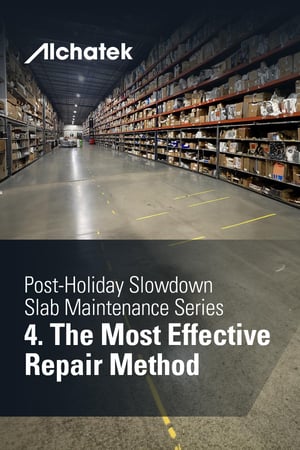 After identifying issues with concrete slabs in your commercial property, the next step is choosing the right repair method. The post-holiday slowdown offers the perfect timing for such repairs, and understanding the available solutions is key to making an informed decision.
After identifying issues with concrete slabs in your commercial property, the next step is choosing the right repair method. The post-holiday slowdown offers the perfect timing for such repairs, and understanding the available solutions is key to making an informed decision.
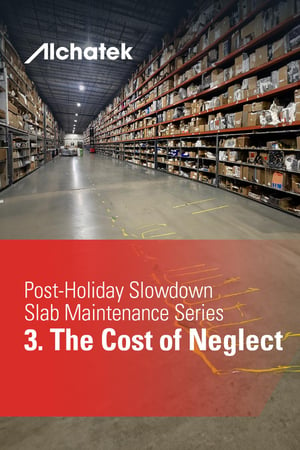 After a bustling holiday season, commercial properties may be left with more than just the usual wear and tear. One critical but often overlooked aftermath is the potential damage to concrete slabs. One thing is certain, ignoring the problem is a lot more expensive than doing something about it.
After a bustling holiday season, commercial properties may be left with more than just the usual wear and tear. One critical but often overlooked aftermath is the potential damage to concrete slabs. One thing is certain, ignoring the problem is a lot more expensive than doing something about it.
 Concrete slabs are essential in providing a stable base for flooring in warehouses, retail showrooms, and other commercial spaces. However, despite their durability, concrete slabs are not immune to problems. Over time, they can become unlevel due to various factors like soil settlement and heavy loads.
Concrete slabs are essential in providing a stable base for flooring in warehouses, retail showrooms, and other commercial spaces. However, despite their durability, concrete slabs are not immune to problems. Over time, they can become unlevel due to various factors like soil settlement and heavy loads.
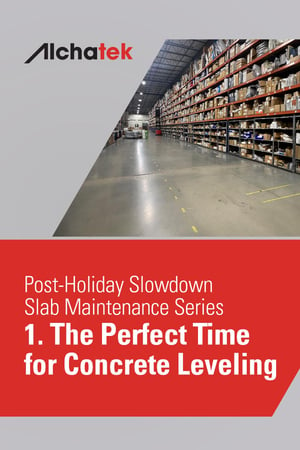 As the holiday season winds down and the festive decorations are packed away, commercial property owners and managers find themselves in a unique period of the year – the post-holiday slowdown. This quieter time offers an ideal opportunity for essential maintenance tasks, particularly addressing one of the most common yet overlooked issues: unlevel concrete slabs.
As the holiday season winds down and the festive decorations are packed away, commercial property owners and managers find themselves in a unique period of the year – the post-holiday slowdown. This quieter time offers an ideal opportunity for essential maintenance tasks, particularly addressing one of the most common yet overlooked issues: unlevel concrete slabs.
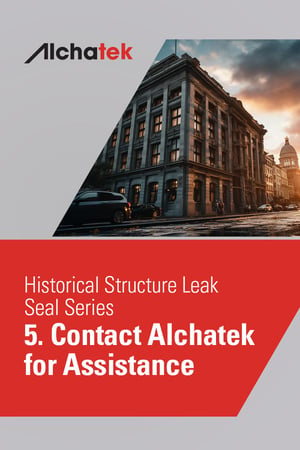 As we conclude our series on preserving historical buildings, the overriding message is clear: the importance of professional expertise in leak sealing cannot be overstated. Historical structures, with their unique architectural features and materials, demand a level of care and knowledge that goes beyond ordinary repair work. Professionals in this field bring not only the necessary technical skills but also an understanding of historical preservation principles, ensuring that repairs enhance rather than detract from the building's historical value.
As we conclude our series on preserving historical buildings, the overriding message is clear: the importance of professional expertise in leak sealing cannot be overstated. Historical structures, with their unique architectural features and materials, demand a level of care and knowledge that goes beyond ordinary repair work. Professionals in this field bring not only the necessary technical skills but also an understanding of historical preservation principles, ensuring that repairs enhance rather than detract from the building's historical value.


 In the delicate task of preserving historical structures, probe grouting with polyurethane grout has emerged as a critical technique. Probe grouting involves injecting grout into the ground around a structure to seal leaks and fill voids next to the walls of below-grade areas. This method is uniquely beneficial for addressing sub-surface issues like water intrusion, without disturbing the structure itself or the interior surfaces.
In the delicate task of preserving historical structures, probe grouting with polyurethane grout has emerged as a critical technique. Probe grouting involves injecting grout into the ground around a structure to seal leaks and fill voids next to the walls of below-grade areas. This method is uniquely beneficial for addressing sub-surface issues like water intrusion, without disturbing the structure itself or the interior surfaces.
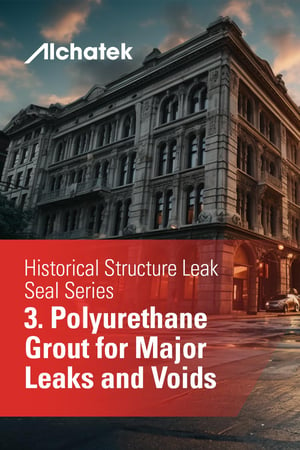 In the realm of historical building preservation, polyurethane grouts stand out as a vital tool for managing structural repairs, particularly in dealing with significant leaks and voids. Polyurethane grouts are injectable resins that react with water to expand and solidify, forming a sturdy, waterproof seal. This characteristic makes them especially suitable for repairing and reinforcing structures that have been compromised over time.
In the realm of historical building preservation, polyurethane grouts stand out as a vital tool for managing structural repairs, particularly in dealing with significant leaks and voids. Polyurethane grouts are injectable resins that react with water to expand and solidify, forming a sturdy, waterproof seal. This characteristic makes them especially suitable for repairing and reinforcing structures that have been compromised over time.
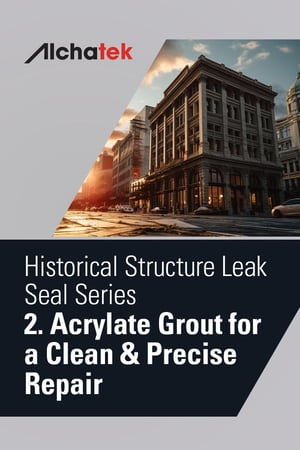 In the realm of historical structure preservation, acrylate grouts have become an essential tool. But what are they, precisely? Acrylate grouts are water-soluble resins that transform into a gel-like substance when mixed with specific catalysts. Renowned for their flexibility, strength, and compatibility with a broad range of building materials, these grouts are particularly suited to older buildings where traditional repair materials may fall short.
In the realm of historical structure preservation, acrylate grouts have become an essential tool. But what are they, precisely? Acrylate grouts are water-soluble resins that transform into a gel-like substance when mixed with specific catalysts. Renowned for their flexibility, strength, and compatibility with a broad range of building materials, these grouts are particularly suited to older buildings where traditional repair materials may fall short.
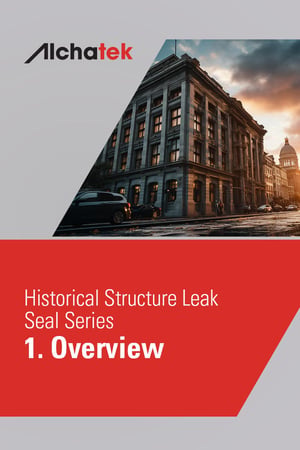 The preservation of architectural treasures is a paramount concern. These structures not only embody a rich history but also present unique challenges in maintenance and repair. One such challenge is effectively sealing leaks without compromising the building's aesthetic integrity or historical value. This series aims to provide an in-depth understanding of the advanced solutions available for this delicate task.
The preservation of architectural treasures is a paramount concern. These structures not only embody a rich history but also present unique challenges in maintenance and repair. One such challenge is effectively sealing leaks without compromising the building's aesthetic integrity or historical value. This series aims to provide an in-depth understanding of the advanced solutions available for this delicate task.